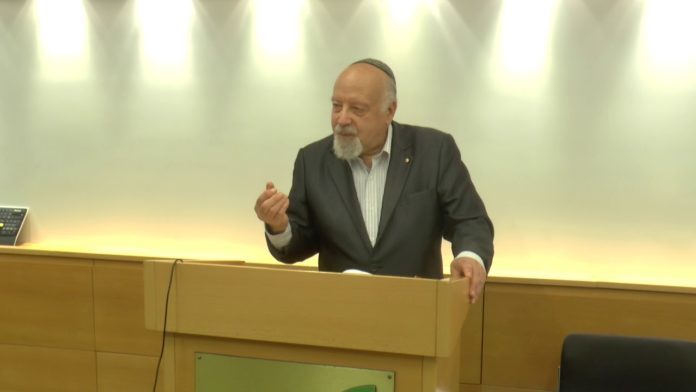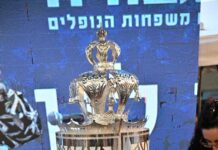
HOW TO TREAT A CONVERT
Q. How should we treat a convert – to Judaism, and away from Judaism?
A. The convert to Judaism must be treated with respect and love. This rule is supported by the verse, “You shall love the stranger (‘ger’), for you were strangers in the land of Egypt” (Deut.10:19).
The word “ger” in this verse was originally meant to refer to an outsider, an alien, who lives in our midst, but by a logical extension, it has come to mean a convert too.
Whatever their original background, they have come – sometimes by means of a long and lonely path – to be one of us and have left behind much that they were accustomed to. They must be treated properly and, as the Mishnah Bava Metzi’a reminds us, must not be reminded of where they came from.
Maimonides records that a certain convert called Ovadiah was insulted by his Jewish teacher; Maimonides indignantly asks, “Was the teacher drunk?”
A procession of authorities state that a convert can refer to Abraham, Isaac and Jacob as “our fathers” (Mishnah Bikk. 1:4), since Abraham was the “father of converts” and brought them “under the wings of the Divine Presence” (Ruth 2:12).
The Shulchan Aruch says that some people were reluctant to let a convert conduct a service, but this opinion is rejected (Orach Chayyim 51:19).
The great Talmudic sage Resh Lakish tells us that the convert “is even more precious than Israel when they stood at Mount Sinai. Had they not seen the thunder and lightning, the mountain quaking and the shofar being sounded, they might not have accepted the Torah, but a convert, who has seen none of these things willingly comes forward to God and accepts upon himself the Kingdom of Heaven” (Tanchuma, Lech L’cha 6d).
There is a theory that the souls of all later converts were potentially there at Mount Sinai and when they subsequently find their way to Judaism they are renewing an ancient spark of identity that was awaiting its moment.
The rabbis say, “The Holy One waits for the nations to come under His wings” (Num.R. 10:1); the prophets say that in time to come the whole world will come streaming to the Mountain of the Lord (Isa. 2:3).
I know that there are cynical views (Yev. 47b etc.) that converts are as troublesome to Israel as boils, but this may reflect a difficult time in ancient Jewish history – or perhaps it can be taken as a compliment to converts, in that their enthusiasm for Judaism often puts born Jews to shame.
How about converts from Judaism?
Colloquially they are called “m’shummadim”, from a root that means to destroy, because they have a negative attitude to Judaism, deleteriously affect the Jewish people, and can end up being more mixed up than ever before. In Jewish history some of our worst opponents were former Jews, and their wiles and ways often brought great suffering to our people.
Yet Heine made the cynical remark that sometimes an apostate only needs to smell a cholent to feel a Jewish spark.
There are some people who, aghast at a child abandoning Judaism, have sat shivah for them, though it is possible that the origin of this idea is the halachic question of whether, when an apostate dies, the family is obliged to carry out the rituals of mourning including sitting shivah.
However difficult it is, one should probably not sever all ties with the renegade Jew but hope that they will one day find their way back. In my own rabbinic experience I have met a number of people whose ancestors left Judaism and they now wish to reclaim it.
SOUL SEARCHING IN THE SELICHOT
Q. What are the origins of the Selichot (penitential prayers) that are recited in the lead up to Rosh HaShanah and Yom Kippur?
A. There were times when the approach of the day of judgment, proclaimed with the shofar each weekday of Ellul and on Rosh HaShanah, sent shivers through Jewish hearts.
Fearful lest they might not repent in time or even, God forbid, add further sins to those that had accumulated during the year, some would even observe a “fast of words” and hardly speak during Ellul.
Into this pattern the prayers for forgiveness, Selichot, fitted so naturally that had they not existed it would have been necessary to invent them.
SM Lehrman wrote, “One can still visualise the crowded houses of worship with men, women and children; and in one’s ears there still reverberate the sobs and groans of a prayerful congregation swayed by the heart-felt cry of ‘Do not cast us away when old age creeps in upon us; do not abandon us when our strength is spent’.”
The word Selichot comes from “selichah”, “forgiveness”. The Psalmist said, “ki im’cha haselichah”, “for forgiveness is with Thee” (Psalm 130:4).
Prayers for forgiveness were solemnly recited on fast-days in time of drought (Mishnah Ta’anit, chap. 2). Eventually they formed part of the service on all public fast days and days of intercession.
They reflected the theology that suffering must have been caused by sin, and therefore repentance, confession and prayer for pardon would surely secure God’s favour and avert the evil decree.
The best known Selichot service is associated with the end of Ellul (amongst Sephardim, from Rosh Chodesh) and the beginning of Tishri. It has won its way into Jewish hearts and yet, like a number of the other specially popular occasions in the calendar, does not have a very ancient lineage.
Simchat Torah and Tu BiShvat, Yahrzeit and Yizkor and even Bar-Mitzvah are other examples of observances that entered Judaism long after the Biblical period and yet are so well-entrenched that people assume they must surely stem from Sinai.
The Ten Days of Penitence were known from the time of the Talmud. The verse from Isaiah 55:6, “Seek ye the Lord while He may be found”, was applied to this time of the year when, said the Rabbis, God is especially accessible.
In post-Talmudic times, the days of penitence were marked by changes and interpolations (such as “zochrenu”) in the liturgy.
It also became customary to rise early on these days to supplicate Divine favour, and there was a long debate amongst the Geonim as to whether and when to fast during the ten days, even on Rosh HaShanah and Shabbat Shuvah.
Eventually the custom settled that instead of fasting on the two days of Rosh HaShanah and Shabbat Shuvah and Erev Yom Kippur, four days of fasting should precede Rosh HaShanah.
Today we have abandoned these fasts but retained the prayers that went with them. Hence we commence Selichot four days before Rosh HaShanah.
In practical terms this means that Selichot commence on the Sunday before Rosh HaShanah, but if the festival falls on Monday or Tuesday they commence from the Sunday of the previous week.
A further reason suggested for having four days of Selichot is that the Rosh HaShanah liturgy includes the Biblical phrase, “you shall observe a burnt offering”, and like an offering which needs to be scrutinised for defects for four days, so we need four days of self-searching before the day of judgment.
The Sephardi custom of commencing Selichot forty days before Yom Kippur (though some communities had the custom of commencing on 15th Ellul and not on Rosh Chodesh) reminds us that at the beginning of Ellul, after the episode of the Golden Calf, Moses ascended Mount Sinai again, after warning the people to behave properly in his absence, and came down on 10 Tishri with the message “salachti”, “I have forgiven”.
The Selichot reverberate with references to “b’ashmoret haboker”, “the beginning of dawn” and indeed much weight attaches to the custom of dawn or pre-dawn Selichot.
It is not only that there were objections to uttering supplications at night. Psychologically there is a more subdued mood just before daybreak than is often seen in the more excited, almost theatre-like feeling of midnight Selichot.
This does not mean to say that Selichot at midnight, especially on the first Saturday night, are not permissible, and probably most who come to midnight Selichot would otherwise not attend or recite Selichot at all, but it is not always possible to combine a musical performance with the mood of introspection and penitence.
At first the Selichot service consisted of Biblical verses and short invocations of God’s mercy. Later the Thirteen Divine Attributes came to be constantly repeated, since the Talmud attached great importance to enunciating and striving to emulate them.
Rabbi Yochanan, in a daring piece of imagery, even declared that God put on a tallit like a cantor and demonstrated to Moses how to recite the attributes, assuring him that if Israel had sinned but recited this passage they would secure forgiveness.
With the development of liturgical hymns, “Piyyutim”, the Selichot were embellished with poetical compositions which were distributed amongst the days when Selichot were said.
These fall into four groups, “tochachot” (admonitions), “akedot” (reflections on the Binding of Isaac), “techinnot” (supplications) and “bakkashot” (petitions). Every day has its “pizmon”, a composition with a refrain; the name derives from the same Greek root as the word Psalm.
Like most Piyyutim, these tend to be intricate interweavings of phrases and ideas from the Bible, Talmud and Midrash.
Their literary structure and ideological ambience are, however, of little interest to the average worshipper. What moves most people is not the intellectual as much as the emotional content of the service.
And in terms of the feelings aroused by the time of year, the mood of the moment, the melodies and refrains, and even the fact that Selichot probably create more genuine piety than any of our other prayers, it must be said that this is truly one of our most successful liturgical experiences.
By Rabbi Raymond Apple
Rabbi Raymond Apple was for many years Australia’s highest profile rabbi and the leading spokesman on Jewish religious issues. After serving congregations in London, Rabbi Apple was chief minister of the Great Synagogue, Sydney, for 32 years. He also held many public roles, particularly in the fields of chaplaincy, interfaith dialogue and Freemasonry, and is the recipient of several national and civic honours. Now retired, he lives in Jerusalem and blogs at http://www.oztorah.com









